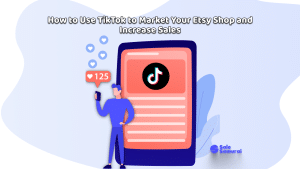
Setting the right price for your products on Etsy can seem like a daunting task. The process requires more than simply covering your costs; it involves understanding market trends, gauging customer behavior, and positioning your brand to thrive in a competitive marketplace. This comprehensive guide offers practical tips and strategies to help Etsy sellers develop a pricing approach that ensures profitability while appealing to customers.
Why Pricing Matters on Etsy
Pricing on Etsy impacts more than your bottom line—it shapes customer perception, influences conversion rates, and reflects the quality and value of your products. Prices that are too low may deter customers who associate low cost with low quality. On the other hand, prices that are too high can lead to low conversion rates if the perceived value doesn’t match the cost. Striking the right balance is key.
Step 1: Calculate Your Costs
Understanding your expenses is the foundation of any pricing strategy. Etsy sellers should account for two main categories of costs:
Variable Costs
These are costs that increase with each product made or sold:
- Materials: Raw materials, packaging, and order inserts.
- Labor: The time and effort spent creating, packaging, and shipping items. Assign yourself an hourly wage to calculate this cost.
- Fees: Etsy charges a 6.5% transaction fee, payment processing fees (3% + $0.25 per order in the U.S.), and $0.20 listing fees per item.
Fixed Costs
These are expenses that remain constant regardless of how many items are sold:
- Overhead: Studio rent, utilities, equipment, and software subscriptions (e.g., design tools or inventory management systems).
- Marketing: Costs associated with Etsy Ads, social media promotions, or seasonal campaigns.
To calculate your baseline price, add up your variable and fixed costs per product. This ensures you’re covering expenses before factoring in profit margins.
Step 2: Define Your Profit Margin
Once you’ve determined your baseline costs, decide on a profit margin. The profit margin should reflect your business goals and account for growth opportunities, seasonal promotions, or advertising budgets.
Etsy itself provides a handy online profit calculator that’s easy to use!
Step 3: Research the Market
Analyzing the competitive landscape helps determine how your prices compare to similar products. Research listings within your niche, paying attention to:
- Pricing Trends: Understand the average price range for similar products.
- Quality Indicators: Assess whether higher-priced items emphasize premium materials, superior craftsmanship, or unique features.
- Customer Reviews: Look for feedback that reveals what buyers value most about high-performing listings.
Step 4: Test and Adapt Your Pricing
Pricing is not static—it should evolve based on market feedback and business growth. Use these strategies to refine your pricing:

A/B Testing
Experiment with different price points to determine which generates the highest conversion rate. For example:
- List two similar products at slightly different prices to see which performs better.
- Adjust prices seasonally to capitalize on increased demand.
Discounting
Offer limited-time discounts to attract new customers or clear out inventory. Use tools like Etsy’s “targeted offers” to send coupons to shoppers who have favorited items or abandoned carts.
Tiered Pricing
Introduce products at three price levels:
- Base Range: Lower-priced items that appeal to cost-conscious buyers.
- Mid-Range: Your most frequently purchased items, reflecting your core brand offerings.
- Top Range: Higher-priced, premium items that showcase your expertise and unique value.
Step 5: Align Pricing with Perceived Value
Shoppers often associate higher prices with better quality. To justify your prices, emphasize the value of your products through your Etsy listings:
- Highlight Craftsmanship: Showcase the time, skill, and materials that go into creating each piece. Include photos or videos of your process to add authenticity.
- Tell Your Story: Share the inspiration behind your designs or tie your products to cultural or personal heritage. Unique stories can enhance perceived value.
- Bundle Products: Create product sets or complementary items that encourage larger purchases while offering added value.
Step 6: Factor in Free Shipping
Shipping costs play a significant role in customer purchasing decisions. Data shows that high shipping fees often lead to cart abandonment. Consider these approaches:
- Build Shipping Into Prices: Include the cost of shipping in your item price to offer “free shipping” without reducing profits.
- Set a Free Shipping Threshold: Encourage multi-item orders by offering free shipping on purchases over a certain amount (e.g., $35).

Step 7: Monitor and Adjust
Regularly review your pricing strategy to ensure it remains effective:
- Track Metrics: Use tools like Sale Samurai to monitor views, conversion rates, and search queries. A high conversion rate may indicate pricing that is too low, while low conversions may suggest the need for better value communication.
- Evaluate Seasonal Trends: Lower prices ahead of major holidays to attract early shoppers and increase visibility. Raise prices as demand peaks to maximize profits.
- Revive Dormant Listings: Reduce prices on older products to rekindle interest and boost sales rankings.
Bonus Tips for Optimizing Etsy Pricing
1. Use Strategic Price Endings
Prices ending in “9” (e.g., $19.99) are proven to attract buyers due to psychological pricing principles.
2. Offer Coupons and Promotions
Coupons can drive urgency and increase sales, especially when targeted at repeat customers or shoppers with items in their carts.
3. Highlight Savings
Show customers the value they’re getting by comparing your price to a hypothetical higher price (e.g., “Normally $30, now $25”).
4. Incorporate Customer Feedback
Pay attention to reviews and adjust your offerings based on what customers value most.
Final Thoughts
Pricing products on Etsy is an ongoing process that requires thoughtful calculation, market research, and flexibility. By considering both costs and customer behavior, sellers can set prices that reflect the value of their work while remaining competitive. Tools like Sale Samurai can streamline this process by providing data-driven insights into market trends and optimizing your pricing strategy. With a solid approach, you’ll position your shop for long-term success.
Ready to refine your pricing strategy? Dive into your data, experiment, and watch your Etsy business thrive!





